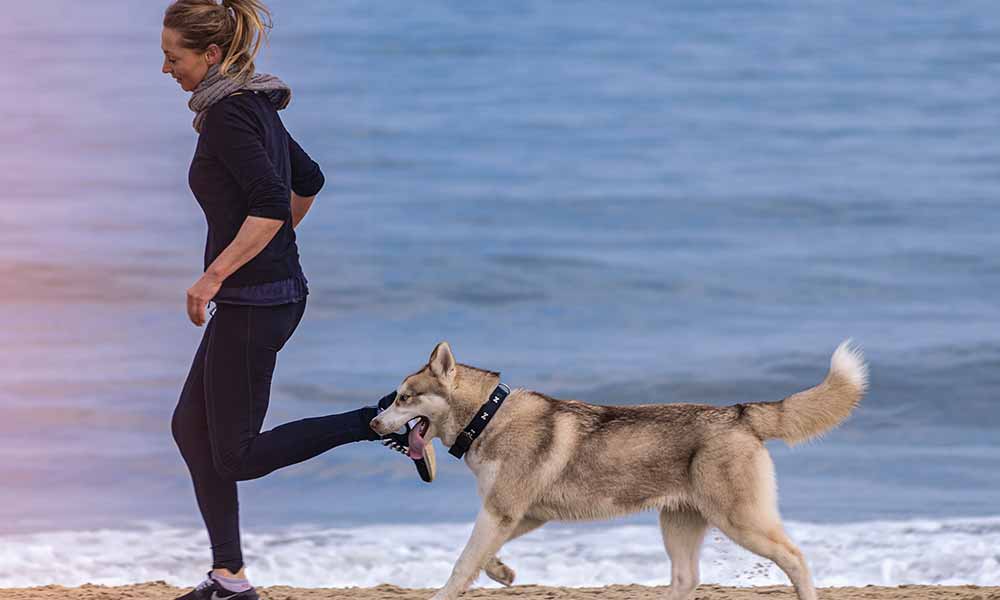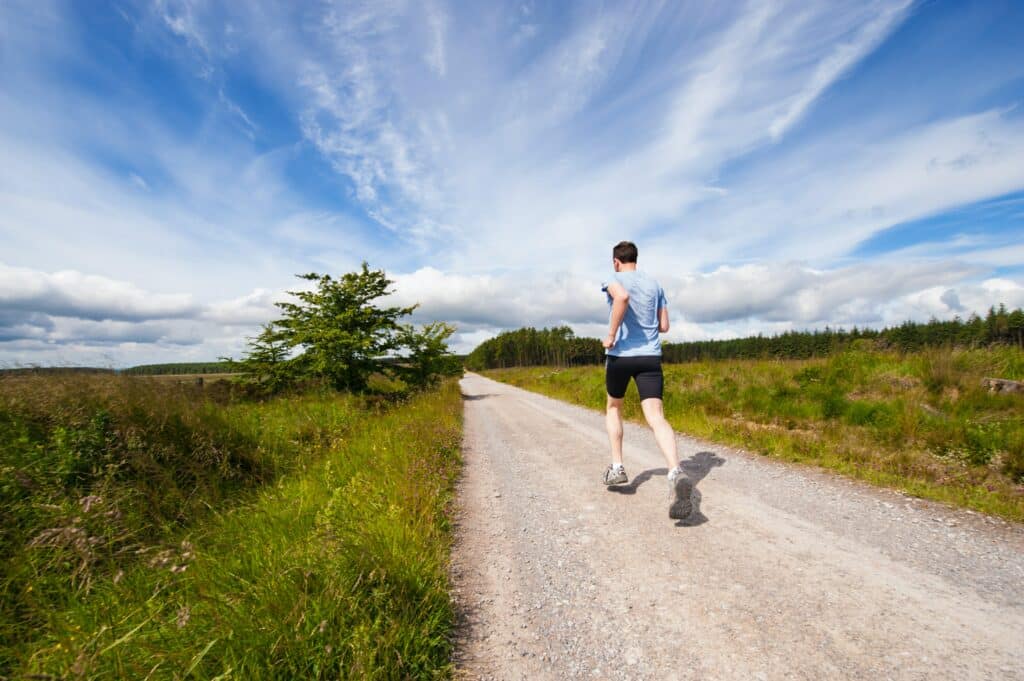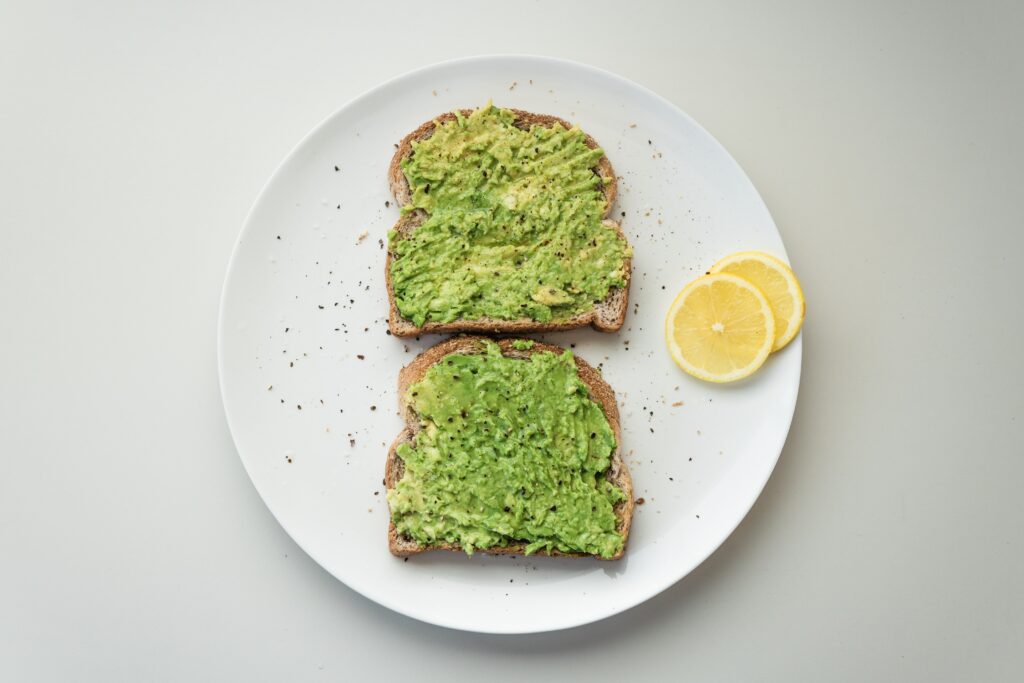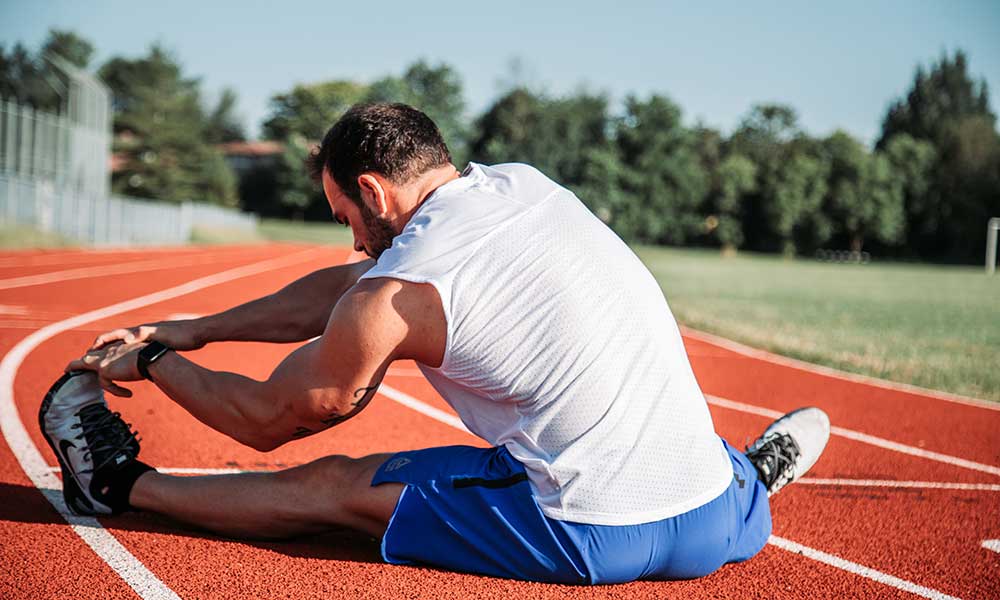Dogs are great companions, they can help us feel safe, they are playful, and can become a member of the family. And, if you’re an active and outdoors type of person, you can enjoy sports with your dog, such as running, trail running or hiking.
On average, dogs can run about 15-20 miles per hour. The fastest dog breed in the world is the greyhound, coming in at 45 miles per hour. Which is why they are often used for hunting and dog racing. The slowest dog breed is a Shih Tzu running at just 6 mph.
In this article, we’ll talk about different breeds and their ability to be running companions, and give you tips for running with your dog.
So, how fast can dogs run?
Not all dogs are created equal. These descendants of ancients wolves have been bred over hundreds of years as companions to have special traits to help their humans. Some include hunting or protection. Others have hair that doesn’t provoke allergies or shed. And still others make adorable pups to carry around with you or hold on your lap.
There is a wide range of top speeds among dog breeds with some, especially the flat-nosed breeds, coming in at some of the slowest due to their difficulties breathing.
Fastest dog breeds
The Greyhound has already been mentioned as the fastest dog breed in the world at 45 mph.
Other notable mentions are:
- Saluki – 42 mph
- Afghan Hound – 40 mph
- Vizsla – 40 mph
- Whippet – 40 mph
- Jack Russel Terrier – 38 mph
Slowest dog breeds
- Shih Tzu – 6 mph
- Pug – 10 mph
- English Bulldog – 15 mph
- French Bulldog – 17 mph
- Chihuahua – 20 mph
- Dachshund – 20 mph
Here is a breakdown of the top speeds for some other common dog breeds:
- Golden Retriever – 35 mph
- German Shepherd – 30 mph
- Labradors – 30 mph
- Beagle – 20 mph
- Weimaraner – 35 mph
- Poodle – 30 mph
Remember that these speeds are maximum speeds and are a general guideline. Much will depend on the health, age, training and unique disposition of each individual dog.
5 best dog breeds for running partners
- Weimaraner
- German Shorthaired Pointer
- Vizsla
- Dalmatian
- Rhodesian Ridgeback
If your current or prospective dog isn’t on this list, don’t worry, it doesn’t mean that they can’t become a great running companion. As long as your dog is in good physical health, with the right behavioral training and physical training, they can get there. Keep reading below to learn more about running with your dog.
As a disclaimer, some breeds, especially those with flat noses may have a harder time breathing so you will want to be careful running with them. When in doubt, have a conversation with your vet to get advice specific to your pet.
Running with your dog
As mentioned earlier, maybe you have recently added a dog to your family with the hope to include it in family outings or sports. Many people see dogs as a great way to get out of the house (especially those living in city apartments). And with a global pandemic just barely behind us, people are looking for new ways to participate in exercise for fear that gyms might close again. So you’re right to think that bringing a pup home can not only bring joy to the whole family, but will also be a great excuse for you to get outdoors.
Getting outdoors for a run with your dog will provide all sorts of benefits to both of you. Not only will your physical and mental wellbeing benefit, but new sights, smells, and sounds will be exciting for your pup who might otherwise lay inside a house all day long. And running can help naughty and young dogs with behavior by giving them a chance to release excess energy.
If you’re a runner, or even just beginning, having someone or something to run with can help with motivation and consistency. If you’re considering getting a dog, look at a breed that falls in the medium to large category. Avoid dogs with short legs (they will have trouble keeping up) or squished faces (such as a pug as they can struggle with breathing).
You will need to look at your dog’s natural running ability to see how much they can handle. Some dogs love to get out on the trail with you and some would prefer a normal walk or to fetch a ball for hours upon end.
Start slow
Dogs, just like humans, need to work up to activity. Going too far or too fast too soon can lead to injuries. An overweight or older dog, for example, will need to acclimate slowly to running longer distances. Even the fastest dog breed will need to be eased into distance running.
The goal is to make this a long term activity that you both enjoy. Start simple with your dog. Wait until you’ve had your dog for a little while. It’s important that you know each other and have been out on walks together already.
Plan out a short route to begin with that’s not far from home (or your car) to see how they do. Expect that in the beginning, they will want to stop and smell things, and likely will need to potty. Give them some time to warm up to being out in the open. Always keep them on their leash in public spaces (and private ones if their recall is poor).
Slowly ease into longer runs, and pay close attention to how your dog runs, breathes, and if they start to slow down or even stop. Bring extra water with you on hot days, or make sure your route takes you by places where they can get a drink.
Plan accordingly
Each dog is completely different. You want your dog to have a collar or harness that is well-fitting so it doesn’t slip off but not too tight that it encumbers running fluidly or breathing properly.
For dogs that pull a lot, you may consider a harness which will not cut air to the windpipe if they pull against the leash and actually gives you more control—safely—over your dog. Choke or prong collars are not recommended and may not even be legal in your area.
Always bring extra poop bags with you. When dogs run, they tend to poop more frequently as exercise increases their body’s processing of food.
Hydration and nutrition is very important for your dog as well. Make sure that your dog is getting enough calories to maintain an active lifestyle. As we mentioned above, on warmer days, bring extra water or plan your run to pass a water source so you and your pup can rehydrate.
Did you know that pavement temperatures can reach upwards of 120 degrees fahrenheit on a day that is just 75 degrees? Remember that your dog isn’t wearing shoes and these heats can damage their paws. The best times of day to run are in the morning or in the evening when the sun is lower in the sky.
Harder surfaces, like asphalt or concrete, affect your dog in the same way they affect you—the impact causes more stress on the joints, thus increasing recuperation time and can possibly lead to more joint pain down the line. With that said, getting out to softer surfaces may be more enjoyable for both you and your pup.
How age can affect your dog
Dogs will naturally grow slower and less active with age. This doesn’t necessarily mean you have to stop activities with them, but you will need to adjust to them. Where, at one point, your dog may have been able to run with you for hours on end, they may just need to join you on shorter, slower runs. Or just walks.
Older dogs may start to show signs of arthritis or general joint pain. Some larger breeds like Great Danes, German Shepherds, Labs, and Saint Bernards are prone to hip dysplasia especially as they age.
Closing thoughts
Many dogs from fastest dog breeds to the slowest dog breeds can make wonderful running companions. It is a great way for you and your dog to get exercise and burn that excess energy. Running with your dog is also an incredible way to build a lasting bond with your best canine friend.







